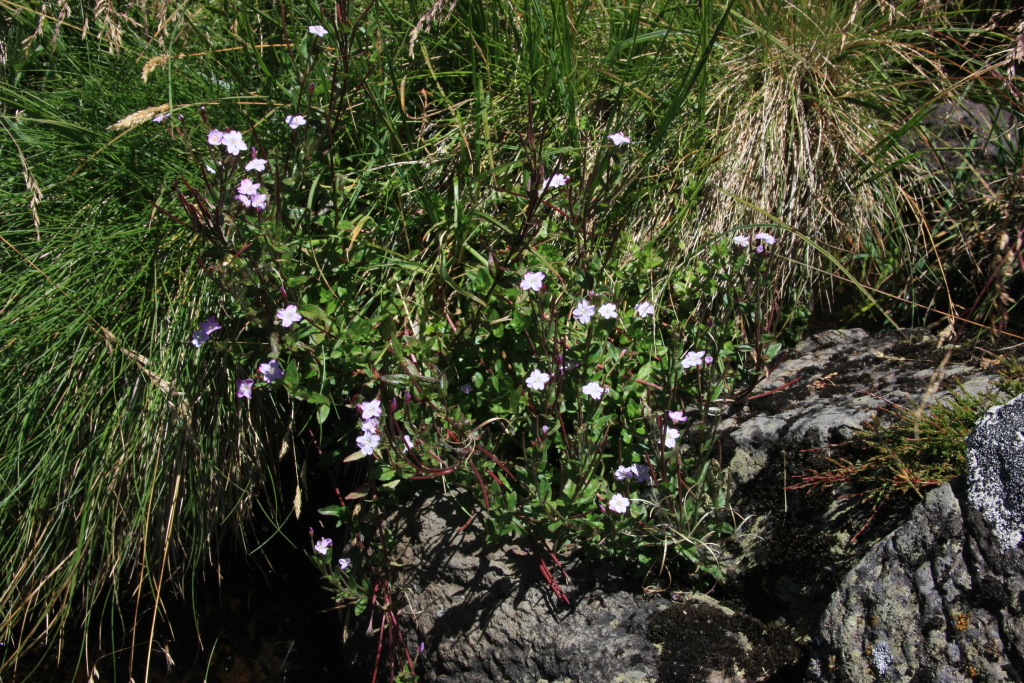Epilobium sarmentaceum
Hausskn. Mountain Willow-herbErect perennial rhizomatous herb 10–45 cm high, usually retaining dead leaves near base; stems covered with close irregular curved hairs, sometimes also with glandular hairs. Leaves usually opposite on lower stems, alternate near inflorescences, lanceolate to elliptic, 1–5 cm long, 3–15 mm wide, margins with sparse small, shallow, regular teeth, base tapering or more or less cordate; petiole 0–3 mm long. Flowers with inside of hypanthium glabrous; sepals lanceolate, 3–6 mm long; petals white or purplish-pink, 3.5–7 mm long. Capsule 2–5 cm long, with a close pubescence; pedicel 1.5–5 cm long; seeds 1.2–1.3 mm long, papillose, comose. Flowers mainly Dec.–Feb.
EGU, HSF, HNF, VAlp. Also NSW, Tas. Recorded from alpine and higher subalpine areas (e.g. Mt Buffalo, The Bluff, Bogong High Plains, Cobberas Mtns), usually on dry slopes among rocks and uncommon to rare.
Although the key character for this species is the internally glabrous hypanthium, several specimens regarded as E. sarmentaceum by P.H. and T.E. Raven, the most recent monographers of the genus in Australasia (Raven & Raven 1976), have tufts of hairs on the corolla between the point of attachment of the stamens as do the similar E. billardierianum subsp. cinereum and subsp. hydrophilum. Further research is warranted to test whether E. sarmentaceum may be better treated as a saxicolous form of either of these taxa.
Jeanes, J.A. (1996). Onagraceae. In: Walsh, N.G.; Entwisle, T.J., Flora of Victoria Vol. 3, Dicotyledons Winteraceae to Myrtaceae, pp. 930–942. Inkata Press, Melbourne.
 Spinning
SpinningRaven, P.H.; Raven, T.E. (1976). The genus Epilobium (Onagraceae) in Australasia: a systematic and evolutionary study. DSIR, Christchurch, New Zeland.


